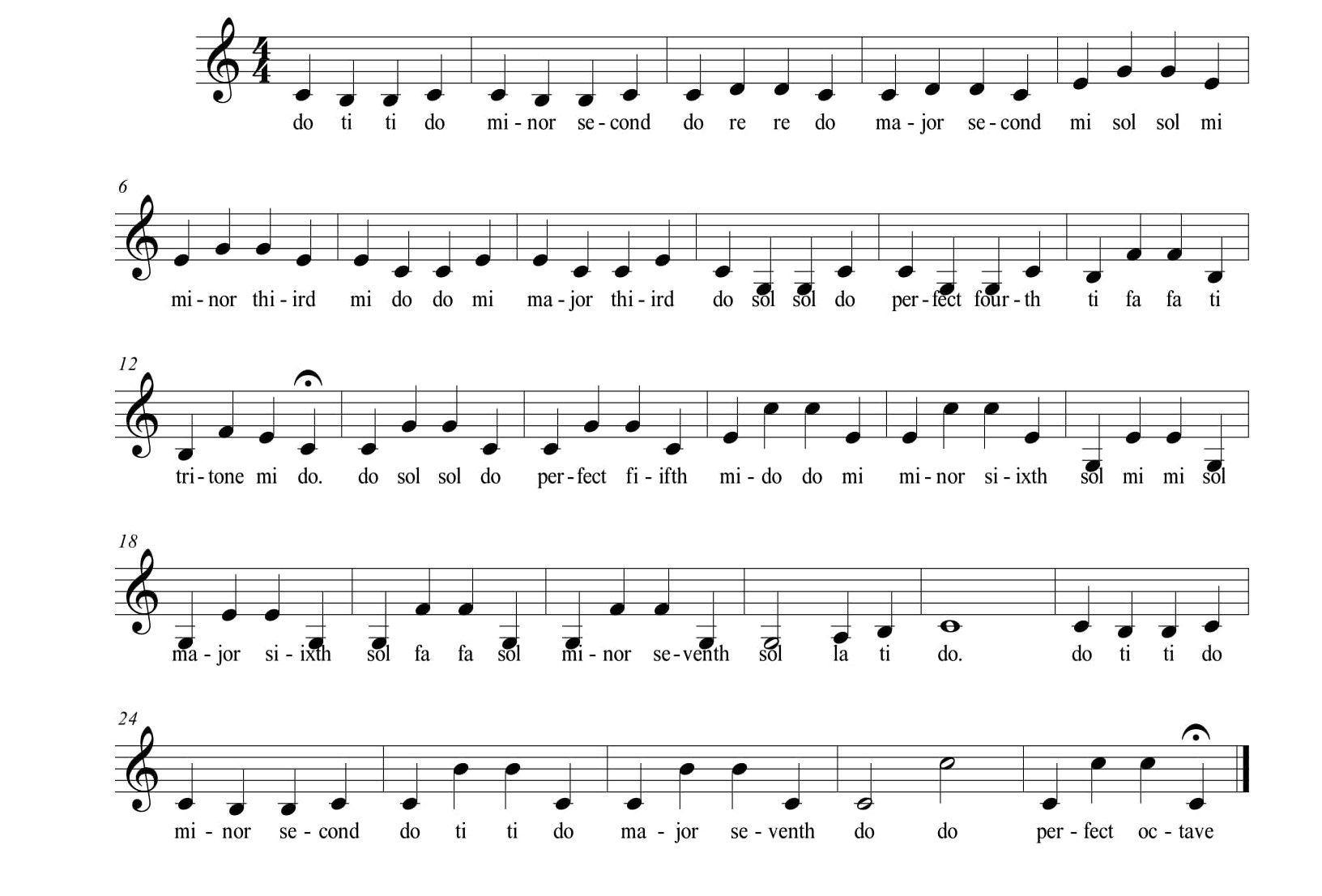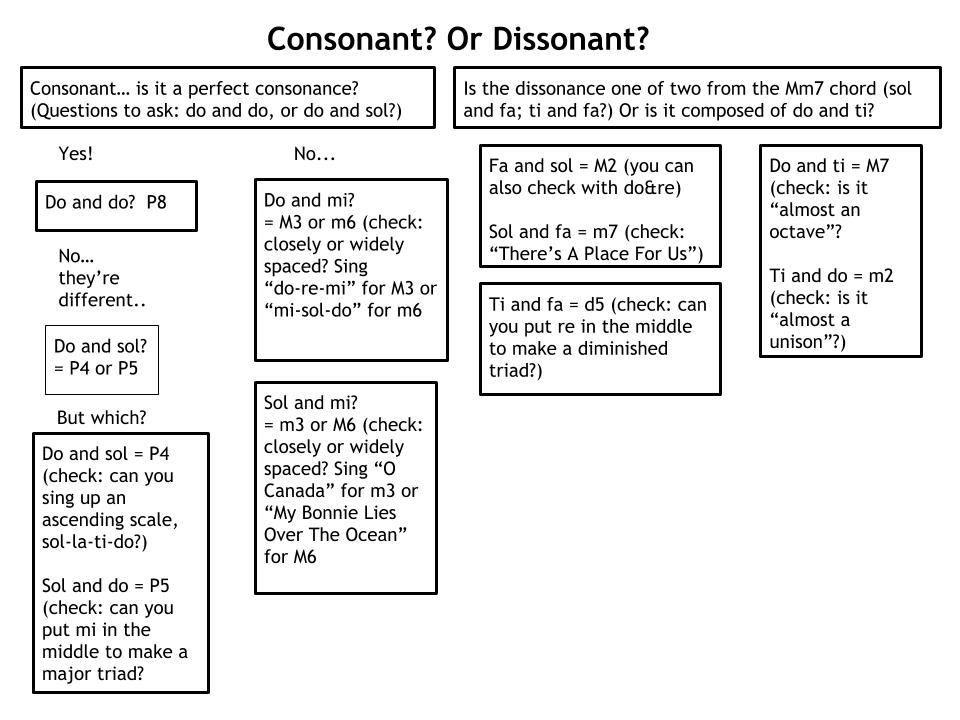Integrated Aural Skills 2019-20
Comprehensive Review of Intervals
Recommended Solfege for Simple Intervals
Here again is the chart of simple intervals and their recommended solfege from Unit 1. Memorize the solfege for easy recall:
| Interval Name | Abbreviation | Recommended Ascending Solfege |
|---|---|---|
| perfect unison | P1 | do, do |
| minor second | m2 | ti, do or mi, fa |
| major second | M2 | do, re |
| minor third | m3 | mi, sol |
| major third | M3 | do, mi |
| perfect fourth | P4 | sol, do |
| augmented fourth | A4 | fa, ti |
| diminished fifth | d5 | ti, fa |
| perfect fifth | P5 | do, sol |
| minor sixth | m6 | mi, do |
| major sixth | M6 | sol, mi |
| minor seventh | m7 | sol, fa |
| major seventh | M7 | do, ti |
| perfect octave | P8 | do, do |
Review the Contexts
Download the study guide from Unit 4 (link below) on the context and solfege of intervals, and listen to the related Spotify playlist.
Piano Practice
Review the harmonic contexts of intervals by practicing the following chords and their inversions.
Perfect and Imperfect Consonances
“Dominant” Dissonances
“Extreme” Dissonances
Singing Practice
Review this singing warm-up of intervals and solfege in common contexts. Memorize the solfege and context for easy recall.

Study Skills - Flow Chart
Flow charts are invaluable in helping us identify correct answers and eliminate errors when we are under pressure in an exam. Review the flow chart below for easy categorization of intervals.

Simple vs. Compound
It isn’t hard to “translate” simple intervals into the compound intervals we are now studying. For reference, here is a compound intervals cheat sheet. The procedure? Simply identify the interval and add 7…
| Simple Interval | Compound Interval |
|---|---|
| m2 | m9 |
| M2 | M9 |
| m3 | m10 |
| M3 | M10 |
| P4 | P11 |
| A4 | A11 |
| d5 | d12 |
| P5 | P12 |
| m6 | m13 |
| M6 | M13 |
| m7 | m14 |
| M7 | M14 |
| P8 | P15 |


